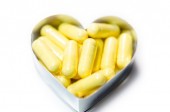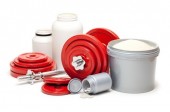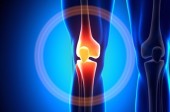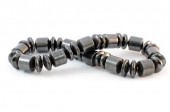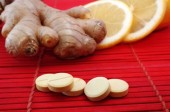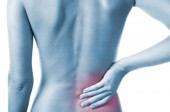Search Podcasts
Unfortunately, there is no cure for lupus. But, treatment options are available to help manage your symptoms.
Additional Info
- Segment Number 3
- Audio File healthy_talk/1510ht1c.mp3
- Featured Speaker Marisa Zeppieri-Caruana, Author
- Book Title Lupus: Real Life, Real Patients, Real Talk
- Guest Website Lupus Chick
-
Guest Bio
 Marisa Zeppieri-Caruana is an author, freelance writer and speaker, currently residing in New York and Florida.
Marisa Zeppieri-Caruana is an author, freelance writer and speaker, currently residing in New York and Florida.
Marisa has had over 300 articles published covering a wide variety of topics including health, business, religion, women's issues, and current events. She has been featured and interviewed on the topic of Lupus in Glamour, Eating Well, WebMD, MSNBC, South Florida Today, The Good News, Chicago Tribune and Yahoo.
Formally educated in Chemistry and Fine Art, Marisa was about to graduate with her RN degree when she was diagnosed with Systemic Lupus. Confined to a bed, she rekindled her love for writing and embarked on a new and fulfilling career. She is currently working on her second Lupus-related book and serves as a board member for the Lupus Foundation of America, Southeast Florida Chapter.
Marisa is also the founder of www.LupusSurvivalGuide.com, a website and blog designed for Lupus patients and their families, and www.Wordslingergal.com, a website for those interested in a writing career. - Length (mins) 10
- Waiver Received No
- Host Mike Smith, MD
Lupus is an autoimmune disease that affects an estimated 1.5 million Americans.
Additional Info
- Segment Number 2
- Audio File healthy_talk/1510ht1b.mp3
- Featured Speaker Marisa Zeppieri-Caruana, Author
- Book Title Lupus: Real Life, Real Patients, Real Talk
- Guest Website Lupus Chick
-
Guest Bio
 Marisa Zeppieri-Caruana is an author, freelance writer and speaker, currently residing in New York and Florida.
Marisa Zeppieri-Caruana is an author, freelance writer and speaker, currently residing in New York and Florida.
Marisa has had over 300 articles published covering a wide variety of topics including health, business, religion, women's issues, and current events. She has been featured and interviewed on the topic of Lupus in Glamour, Eating Well, WebMD, MSNBC, South Florida Today, The Good News, Chicago Tribune and Yahoo.
Formally educated in Chemistry and Fine Art, Marisa was about to graduate with her RN degree when she was diagnosed with Systemic Lupus. Confined to a bed, she rekindled her love for writing and embarked on a new and fulfilling career.
She is currently working on her second Lupus-related book and serves as a board member for the Lupus Foundation of America, Southeast Florida Chapter. Marisa is also the founder of www.LupusSurvivalGuide.com, a website and blog designed for Lupus patients and their families, and www.Wordslingergal.com, a website for those interested in a writing career. - Length (mins) 10
- Waiver Received No
- Host Mike Smith, MD
Studies have shown CoQ10 has the ability to reduce heart failure.
Additional Info
- Segment Number 1
- Audio File healthy_talk/1510ht1a.mp3
- Organization Life Extension
- Guest Website Healthy Talk MD
- Length (mins) 10
- Waiver Received No
- Internal Notes NO GUEST
- Host Mike Smith, MD
Listen in as Dr. Mike provides the answers to a wealth of health and wellness questions.
Additional Info
- Segment Number 5
- Audio File healthy_talk/1509ht4e.mp3
- Organization Life Extension
- Guest Website Healthy Talk MD
-
Transcription
RadioMD Presents: Healthy Talk | Original Air Date: February 26, 2015
Host: Michael Smith, MD
It's time for you to be a part of the show. Email or call with questions for Dr. Mike Now. Email: AskDrMikeSmith@RadioMD.com or call: 877-711-5211. The lines are open. What are you waiting for? The doctor is in.
So, this question just came in on email and you can send me your questions right now and I'll read it on air. Here's one right now. That's AskDrMikeSmith@RadioMD.com.
This is a reference to the 5 natural workout supplements segment that I did and so the question is:
"Isn't there a protein to carb radio that's good for sore muscles?"
That's a great question because I just learned this myself from a good friend of mine, Dr. Holly Lucille, who was on my show talking about delayed onset muscle soreness. More and more people are getting out, they're working out—which is great—but that causes some sore muscles which is not necessarily a bad thing, by the way. Sore muscles actually could be, according to Dr. Lucille, a good thing. You break down the muscle fiber a little bit. You cause these little micro tears and the muscle rebuilds itself and you can rebuild stronger at an increased amount.
So, that actually could be a good thing. She talked about a protein to carb radio of 1:2 thirty minutes after you work out. So, 1 serving of protein to 2 servings of a complex carb. Now, not sugar. She made that clear. Not sugar. So, a serving of protein to 2 servings of complex carbs 30 minutes after you work out. That can help to control muscle soreness. For additional help, she mentioned curcumin and ginger. I would throw in there, as a matter of fact, one of the workout supplements that I mentioned and that was glutamine. Glutamine can be very helpful for muscle soreness. So, there you go. It's a 1:2 protein to complex carb ratio.
Okay. Going on. Next question."Should I be concerned about my sodium and sugar intake?"
Well, you know, I don't know you personally, but I'm going to make two assumptions. Number one, if you're an average American, you're eating the Standard American Diet which is S-A-D. It is. It's a very sad diet that the average American eats, so I have to make an assumption that you're eating too much salt and sugar, yes. Then, of course, you're asking me this question, right? Most people that feel like they've got it under control don't ask that question. So, the fact that you're asking tells me that you probably do have an issue with salt and sugar.
Okay. Let's talk about salt first because there are a couple of myths about salt. First is about blood pressure. The most common reason doctor's say "Limit your salt," is because it could increase blood pressure. You know, that's not really true? Did you know that? If you have bad kidneys or you already have blood pressure issues and you do too much salt, then it can be a problem.
But, if you're blood pressure is fine and you've got healthy kidneys, you can do a lot of salt and your body handles it. Your kidneys metabolize and get rid of it. But, it's still probably a good idea to manage salt a little bit better, especially with all the salt alternatives out there. I mean, Mrs. Dash. You've got good fresh herbs, spices. There's so much out there. You know, 20 years ago, at your local grocery store, there were hardly any choices. I mean, yes, it was salt and pepper. That was it. The spice aisle or the salsa aisle, I mean, that was like the exotic place to go. Only weird people went down those aisles. But now, they're all over the place. So, you know, yes. I think it's important and I believe in balance. I believe in moderation of anything.
Listen, I come from a family where we used a lot of salt. My dad would salt a salt stick and it would cause fights—especially when my Greek grandmother was cooking food for him and he would salt her food before even tasting it. Oh! She would just...and she was a tough woman. So, yes. I think it is important to be careful with salt intake. I just wanted you to know that there are some myths about it. I mean, if you do have healthy kidneys and your blood pressure is normal, it's not really about that. It's just that we have to do things in moderation especially with so many of the great spices and stuff out there. So, try to use some of that stuff more and less of the direct salt.
Now, as far as the sugar, yes. I mean, this is the big one, right? I mean, I've talked about sugar so much and I will continue to talk about sugar because it's killing us. My gosh. I mean, you know, sugar is related to abnormal lipid profiles, metabolic syndrome, cardiovascular disease. Obviously, diabetes, nerve problems, brain problems. We're now even maybe calling Alzheimer's "diabetes in the brain" because there's some insulin and weird sugar stuff going on there. So, yes, we have to watch sugar.
Sometimes when I'm doing some lectures, I like to ask people, "What are the two diseases that were almost unheard of before we brought in processed sugars?" Do any of my listeners know? What were the two diseases that were almost unheard of before we brought in processed sugars? Anybody? Anybody? Number one, diabetes. It was there, but it was pretty uncommon. And number two, acne. Yes. Acne. So, yes, we have to watch the processed sugars and especially, just like with the salt and all the alternative salts out there and the spices and stuff like that, there are better sugars. There are less processed sugars. There's Turbinado. There's molasses. There are different ways to get sugar. We just have to limit the amount and what's really hard today is, there's so much added sugar to things, too.
As a matter of fact, I'm going to be doing a segment coming up on the effects of added sugar and how that was actually shown recently to increase all-cause mortality. So, that's coming up on a future segment. So, yes, you need to watch your sugar. Because you're asking me the question, if you really have a big, big, big sugar craving, try something like saffron extract. If you're a sugar craver in the afternoon because of work stress, kid stress, life stress and sugar is your comfort, there's a reason for that. Cortisol is a sugar mobilizer that releases insulin. It drives the sugar out of your blood stream and you start craving the sugar. Plus, when you're stressed, you've got to feed the stress. You've got to feed your muscles and your brain because you're stressed out, so you need more sugar. So, you crave it.
What we have found is saffron is able to cut sugar cravings really well because it has an influence on serotonin which is the "feel good" neurotransmitter and so that can be helpful. So, try it. Watch your salt and try some of the spices and some of the...Is it Mr. Dash or Mrs. Dash? I can't remember, but I don't really use that. I just use a lot of spices and hot sauces and stuff like that. So, watch that salt and then, the real issue is the sugar. One great way to control sugar cravings is with things that boost serotonin. So, tryptophan, saffron extract, 5 HDT is another one there. So, yes. Please watch sodium and sugar intake.
Alright, next question."Are frozen foods healthier than canned foods?"
Yes. That was pretty easy. Frozen foods have been shown to preserve nutrients better. You don't have a lot of the salt preservatives and the nitrates that you find in canned foods so, yes. Fresh is always best, right? If you go into your grocery store, all of the fresh food is on the outside with refrigeration. That's where we need to be shopping.
We need to be filling up our shopping carts with about 80% of the stuff on the outside aisles--not the inside aisles. That's where you've got the pre-packaged stuff and the canned foods and the salts and the preservatives and the sugars and all that kind of stuff. So, you know, we can't always eat fresh. I get that. So, when you can't, stick to the frozen. It is better. More nutrients. Less preservatives. Yes, I like frozen food better than canned.
This is Healthy Talk on RadioMD. I'm Dr. Mike. Stay well. - Length (mins) 10
- Waiver Received No
- Internal Notes NO GUEST
- Host Mike Smith, MD
Listen in as Dr. Mike provides the answers to a wealth of health and wellness questions.
Additional Info
- Segment Number 4
- Audio File healthy_talk/1509ht4d.mp3
- Organization Life Extension
- Guest Website Healthy Talk MD
-
Transcription
RadioMD Presents: Healthy Talk | Original Air Date: February 26, 2015
Host: Michael Smith, MD
RadioMD. It's time to ask Dr. Mike on Healthy Talk. Do you have a question about your health? Dr. Mike can answer your questions. Just email: AskDrMikeSmith@RadioMD.com or call now: 877-711-5211. The lines are open.
Alright. My first question is, "I get chronic styes in my right eye. Why is that and why my right eye?"
Good questions. So, let me use this opportunity just to kind of educate a little bit about styes. Styes are an oil gland at the edge of the eyelid that becomes infected. They are infections, right? I mean, just go on Google and just type in or search "stye".
You'll see all kinds of images. Some of them, they can get pretty big in some cases and be pretty gross looking. For the most part, it just looks like a little pimple on the eyelid. In most cases, it's on the outside of the lid. Sometimes they can be more on the inside which causes a little more pain and irritation for people because it's rubbing up against the eye. But, that's what it is. It's an oil gland that becomes infected.
As a matter of fact, the most common bacteria in a stye is one that's very common in the nasal cavity and the sinus cavity. It's called staphylococcal bacteria and, usually, people that are prone to this...Well, first of all, everybody, whether you realize this or not, everybody rubs their eyes, rubs their nose. You're constantly doing that. You're constantly touching yourself. That didn't sound right. You're constantly touching your face and so, yes, you rub your eyes, rub your nose and just the bacteria—the staphylococcus—spreads and gets into an oil gland and becomes infected.
So, to answer your question, first of all, why your right eye? Well, based on what we understand how this bacteria goes from your nose to your eye, you're rubbing your right eye more. That would be the answer.
Listen, as a radiologist, I've looked at some pretty weird images of peoples' sinus cavities. It's rare, but I've seen cases where people have connections between the sinus cavities, the nasal cavities and the eye ducts. I mean, I've seen it. Sometimes it happens when people have chronic sinusitis. That chronic inflamed lining of the sinuses connection causes some erosions into the bones and allow weird connections to happen in between the eye and the sinuses. So, maybe there's something there. Do you suffer from chronic sinusitis and you now have this easy connection between the sinus cavity and your eye ducts? I don't know. Maybe. I guess if you do have chronic sinusitis, that might be it. Or, maybe you're just rubbing your right eye more. So, I don't really have a direct answer for you. It is interesting. You know, I looked this up.
You can go to AllAboutVision.com. I just did it myself. AllAboutVision.com. It's a nice website. It's kind of like the WebMD for eyes and it does say on their page about styes that it does seem to happen on one eye or the other more often than not. Now, it doesn't say right or left, so most likely, that tells me that we tend to rub our right eyes more or left eyes more and that's where the styes form. So, that's probably why.
So now, the chronic condition of this, what happens first of all, there are two ways to look at this. So, you have chronic styes. Number one, it could be related to some sort of weird connection you have between your sinuses and your eyes, like especially if you have chronic sinusitis. So, that's one aspect of that. That's the first question I would ask you in my office is I would say, "Well, do you have chronic sinusitis? Do we have some sort of weird connection that's formed from all of that inflammation in your sinuses?" That would be one route to look at.
But, the other route, when it comes to chronic styes, is stress. We know that when we're stressed, when we have high levels of cortisol and the neurotransmitters, epinephrine, norepinephrine, when we're just revved up, when our body is under a sympathetic drive—that fight or flight—we produce more oil. So, a lot of times when people are stressed out, they will produce more oil in the gland. That oil has a greater chance of being clogged. You, then, rub the bacteria in it from your nose and boom! There's the stye. So, it could be related to an anatomical situation with chronic sinusitis or it could be related to stress.
Those are the two most common reasons for chronic styes. But, it is an infection. I often got the question when I was practicing out in Texas, "Is it contagious?" Kids get this a lot because they're rubbing gunk all over their face, right? I mean, kids use their hands as tissue. So, you see styes a lot in children and a common question that I would get from parents is, "Is it contagious?" Technically speaking, it can be. It's not pink eye. That's different--totally different.
But it is contagious because it is staphylococcus and so you have to be careful with it. But, it's not highly contagious. It's not pink eye or anything like that. But, yes. You need to be aware that it is infectious. I think a lot of people don't realize it is infectious. Don't ever pop it, either. You know, a lot of times, people, especially when the stye is on the outside of the lid, they will be very tempted to pop it because it's pimple-ish. We like to pop pimples. The problem is when you do pop it, first of all, you can now spread that infection into the eye, so you have to be careful, right?
But also remember, too, you could have a stye on the outside of the lid or on the inside, but in some cases, it covers both of them. It starts on the inside and travels to the outside. So, if you pop it, you could push all that gunk to the inside and it pops in the inside and can infect more of the bottom of the lid, the eyelid and can cause a lot of problems. The more you pop a stye, because they often seem to happen in the same areas, you really start to break down those oil glands and they lose their integrity and you're going to be at increased risk for styes down the line. So, don't pop them. People love to do it. It's very tempting, but don't do that. Okay. So, that's the stye. You're right eye—it's either chronic sinusitis or you're just rubbing your right eye and the reason it's happening a lot, may be just stress. So, some of those are the answer there.
Okay, let's go on to the next question. "I was wondering if there are any natural ways to cure heartburn. Thanks, Lauren."
Lauren, yes. You know, one of my favorite natural ways to cure heartburn, is called d-limonene. D-limonene is a compound that comes from citrus fruit and it just coats the stomach really well. It's one of the most effective supplements I've ever seen. What I mean by that is you can take somebody with heartburn symptoms, and put them on d-limonene for a couple weeks. You kind of have to load it up in the system, but often, after that first two weeks, most people can control their heartburn with just one or two a week—a week, right?
So, you know, people with heartburn are popping antacids like candy throughout the entire day, every day, but with d-limonene, you can get to a point with maybe one pill a week, maybe 2 pills a week and it can control the heartburn. It is that effective and people swear by d-limonene. So, I would check that out.
The only caveat to that and the only warning with d-limonene, Lauren, is if you've been diagnosed with ulcer disease. If you already have an ulcer, a gastric ulcer or a peptic ulcer, d-limonene is a mild acid and I know that seems weird, right? You're using a mild acid to control heartburn, but it works. But, if you have an ulcer, it can irritate it a little bit and you might have some pain with it. So, if you have established ulcer disease, don't take d-limonene. Something like carnosine is better for that. Or licorice. So, try d-limonene if you don't have ulcers.
This is Healthy Talk on RadioMD. I'm Dr. Mike. Stay well. - Length (mins) 10
- Waiver Received No
- Internal Notes NO GUEST
- Host Mike Smith, MD
What is a safe and natural way to enhance your workout?
Additional Info
- Segment Number 1
- Audio File healthy_talk/1509ht4a.mp3
- Organization Life Extension
- Guest Website Healthy Talk MD
- Length (mins) 10
- Waiver Received No
- Internal Notes NO GUEST
- Host Mike Smith, MD
Listen in as Dr. Mike provides the answers to a wealth of health and wellness questions.
Additional Info
- Segment Number 5
- Audio File healthy_talk/1509ht3e.mp3
- Organization Life Extension
- Guest Website Healthy Talk MD
-
Transcription
RadioMD Presents: Healthy Talk | Original Air Date: February 25, 2015
Host: Michael Smith, MD
It’s time to ask Dr. Mike on Healthy Talk. Call or email to ask your questions now. Email: AskDrMikeSmith@RadioMD.com or call: 877-711-5211. The lines are open.
If you’d like to ask a question live on air right now, call 877-711-5211. I could also use more of your emailed questions, AskDrMikeSmith@RadioMD.com. AskDrMikeSmith (all one word) @RadioMD.com
So, this question is about prolotherapy. “I’m considering having prolotherapy on my knee, but I’m not sure if I fully understand how it works and if it works. Can you shed some light on this?”
Yes. This is an interesting therapy and it does work. It does. The official conventional name, I guess, the medical name is “proliferation therapy”. Let me try that again, “proliferation therapy” or “regenerative injection therapy”. What happens here, we’re basically just taking advantage of the fact that the body is awesome. That’s how I could sum up prolotherapy. The body is awesome at repairing itself. It just sometimes needs a stimulus to kind of get it going and that’s what prolotherapy is. It’s a solution, usually like a sugar solution. The technical word for this is a “hyperosmolar solution”, meaning that when you inject it, it has a lot of particles in it, compounds in it, so that it forces blood flow towards it. Water moves towards it and it brings all of the immune cells and repair cells into that, in this case, the knee joint. So, you’re injecting this solution that, in and of itself, the solution’s safe. It’s just usually like dextrose or sugar, but it just draws in the blood flow, it draws in the immune cells and the repair cells.
At first what happens is, the cells that first get into the joint kind of break everything down and then the cells that follow are a lot of the repair cells—cells that make collagen and start to rebuild the connective tissue and it does work. It’s just taking advantage of the body’s normal repair process and that’s what prolotherapy is. There is a ton of anecdotal evidence and that’s simply evidence where people will tell us they love it. Maybe not in a clinical trial, they just simply had it done and they swear by it and there’s tons of that. Many people will tell you prolotherapy really helped them and in even some cases, some case reports, avoiding surgery and even knee replacement or hip replacement, stuff like that. So, there’s a lot of that type of evidence. Now, as far as clinical evidence it’s a little bit less impressive, but it is there. There is evidence for knees, for instance, that prolotherapy can decrease pain, increase range of motion down the line. It does take time and then, of course, if you have any sort of immune issue, it may not be the best idea because we’re taking advantage of the normal immune response. So, if you’re on drugs to bring down the immune system like steroids or if you just simply have some sort of immunosuppression, it may not be the best thing for you, but assuming this person that asked this question, you have a normal immune response, prolotherapy should be great for you. I think you should give it a try.
Okay. Number two: “Is the calcium score test to measure heart disease valid?” Yes, it is. That was an easy one, right? So, this is a test that is used to help determine what someone’s real risk is for heart disease. So, you know, if you’re somebody who has low risk, your doctor has looked at bloodwork, family history, your own personal history and there’s just nothing there and, overall, you’re at low risk, you probably don’t need a calcium score done. And, if you’re somebody on the flipside of that, right? You know, high risk for heart disease. Let’s say you already had a heart attack or you have a lot of those 17 heart disease risk factors like cholesterol issues, blood pressure, inflammation, you don’t need a calcium score test because you’re already high risk and you should be treated for those things, right? So, low risk and high risk for heart disease, you don’t need a calcium score. It’s really for that middle, medium risk person that the doctor’s just not quite sure. Maybe you have a family history, but you don’t have anything personal. Maybe you have just 3 or 4 of those 17 heart disease risk factors and you have a few cousins that all had heart attacks in their 50’s, but no first degree relatives or something like that. So, you’re kind of in this “iffy” group. We’re not really sure where you fall. That’s where a calcium score test could be beneficial. They basically just look at how much calcium is in your system. You get a score that ranges from 0 to 400 and the higher the score, the greater the risk for heart disease. As a matter of fact, a score greater than 100 is considered abnormal, but if you score between 100 and 400 on a calcium score test and you are at that medium risk, there is an increased likelihood of a heart attack within 3 to 5 years. So, it does give some information. So, if you’re a medium risk and you score less than 100, see your doctor, “Ah!” He takes a breath and so maybe we don’t have to be so aggressive. But, if you’re medium risk and you score above 100, “Ah! Let’s be a little more aggressive in treating some of the heart disease risk factors.” One of the common questions that I get that conventional medicine doesn’t really have an answer for in many cases, is what do you do? Okay. So, I’m a medium risk person and my calcium score is 200, let’s say, or 300, whatever. It’s above 100. What do I do? I mean, is there a way to bring that down? Well, the only way that I’ve seen work and, again, it’s more anecdotal, although there was a publication last year that showed some promise, and that’s for chelation therapy. IV chelation with a compound called “EDTA” can remove calcium. There’s even an oral supplement of EDTA that might be helpful, but the research was done with an IV EDTA. So, oral chelation, IV chelation, might be something to try. There’s another oral chelating agent called “modified citrus pectin”, which is a protein found in fruit and stuff. If you break it up into smaller pieces, it’s called “modified” and when you ingest that, it’s been shown to act as kind of a chelater as well. So, oral EDTA, IV EDTA or modified citrus pectin all could be helpful if you’re medium risk and your calcium score is greater than 100. Okay. So, that takes care of that one.
Alright. Next question. “Is bike riding bad for men?” So, I’m assuming this is in the context of prostate issues. That’s my assumption. “Is bike riding bad for men?” Well, okay, the theory is sitting on the seat puts pressure on the prostate which can increase lymphatic tissue and inflammation, cause prostatitis, that kind of stuff. So, May Lynn Paul is a contributor to Healthy Talk segments. I had her look into this a little bit, assuming that that’s what this person is talking about. The results suggest that “no or very small increased risk in prostate cancer or sexual dysfunction”. I’m assuming that that’s what this person is talking about here and that’s what May Lynn found. Some bike saddles and riding positions do put pressure on the nerves and arteries that supply the prostate, the penis and the testicles. So, finding a comfortable saddle that doesn’t cause numbness and avoiding very long rides and standing up periodically all can help. So, there you go. So, there’s really no clinical evidence that bike riding is going to cause prostate issues. So, I’m assuming that’s what you were looking for.
This is Healthy Talk on RadioMD. I’m Dr. Mike.
Stay well. - Length (mins) 10
- Waiver Received No
- Internal Notes NO GUEST
- Host Mike Smith, MD
Listen in as Dr. Mike provides the answers to a wealth of health and wellness questions.
Additional Info
- Segment Number 4
- Audio File healthy_talk/1509ht3d.mp3
- Organization Life Extension
- Guest Website Healthy Talk MD
-
Transcription
RadioMD Presents: Healthy Talk | Original Air Date: February 25, 2015
Host: Michael Smith, MD
It’s time for you to be a part of the show. Email or call with questions for Dr. Mike now. Email: AskDrMikeSmith@RadioMD.com. Call: 877-711-5211. What are you waiting for? The doctor is in.
So, my first question has to do with those magnetic medical bracelets that people wear often. Many of the companies that manufacture these bracelets, gosh, they say that it can decrease water retention, improve wound healing, pain. As a matter of fact, it wasn’t that long ago that I was watching one of those late night infomercials or whatever. Listen, those late night infomercials, those producers know what they’re doing. They know how to capture your attention. But, I was watching this show on these magnetic bracelets and this guy was in a mall and he was apparently stopping “random”—you didn’t see me, but I did that in the air quotation marks—“random” people. I’m sure they were actors. But most of them, by the way, were overweight, walking a little funny, a little hip pain, back pain type of stuff and he would have them stand without the bracelet on first and they’d put their hands out, close their eyes and he would barely touch their arms and they would fall over. Which, by the way, that is a legitimate neurological examination, but then, of course, they’d put the bracelet on and he would do the same thing and, all of a sudden, miraculously, they were able to stand strong and stand up straight. Literally, within seconds, years and years of back osteoarthritis and pain just went away. So, I’m, obviously, as a medical doctor—as someone who really believes in the scientific method—I’m a little skeptical with that kind of stuff. But, here’s the question from this listener: “My husband swears that his magnetic bracelet works. He had bouts of vertigo that completely stopped since wearing it, but I think it just cleared up. What are your thoughts about these bracelets? He’s thinking about adding a Tibet healing bracelet and it’s very expensive.” Okay. So, the first question is asking what my thoughts are, in general, about these bracelets. Okay, so I want to say something first about magnetism, in general. I think there is therapeutic application for magnets. I do. You know, your cells in the body have electrical charges in a fluid type of environment and those electrons, protons, even charged proteins, glycoproteins—which are sugars and proteins connected--all of them can be influenced in certain ways by magnets and that is true. So, I think there is some therapeutic application out there. By the way, I went on WebMD. You know, when it comes to natural medicine, I don’t go to WebMD too much because they’re a little biased towards allopathic stuff, but they always have at least just good general descriptions of things. Even on WebMD, they’re saying that magnets are currently being tested for pain, low back pain, foot pain, heel pain, arthritis, rheumatoid arthritis, fibromyalgia, chronic fatigue, diabetes, menstrual pain, sports injuries and migraine headaches. So there is research looking at magnetism in treating those conditions. No results yet. No conclusions. They go on to say--and this kind of surprised me. They say that worldwide sales of magnets for treatment is estimated at over $5 billion annually. Wow. So, we are spending a lot of money on these things. I think, in general, magnetism has some therapeutic applications, but there are no hardcore conclusions on these things. In reference to your husband who had vertigo and who all of a sudden now doesn’t have it, maybe it did just clear up. I don’t have an answer for that. Things do just clear up, but he doesn’t have vertigo and he likes the bracelet and so, you know, let him continue to wear it. Now, you’re concerned about this Tibet healing bracelet. I looked those up online, too, and they are expensive. I really can’t tell you the difference between a basic magnetic bracelet and one of these Tibet ones. If you are a listener that has that kind of information, share it with me.
AskDrMikeSmith@RadioMD.com. But, they are expensive and whether those Tibet healing bracelets are better than a basic magnetic bracelet, I don’t know. If he’s already feeling better on the cheaper one, I mean, maybe that’s your argument. “Why do you need a new, more expensive model?” You know? Maybe that’s your argument. At least just let him keep the cheaper one. But, it’s working for him. You know, even if it is placebo effect. Placebo effect is placebo effect. People feel better, sometimes, on placebo. It’s true. That’s why we test things against placebo. So, my overall feeling about these magnetic bracelets is we need more research. I think magnetism itself is a potentially therapeutic modality, specifically for pain, but we just don’t have any major conclusions. I don’t believe the infomercial I saw. I don’t think anything works that fast. I just don’t. But, I could be wrong. I don’t know. So, we’ll have to see with more research.
Okay. Number two: “My good cholesterol is always so low, usually around 20. “ And that is very low. “My doctor wants it at least half my LDL, which is good at 90. Are there any natural supplements that raise HDL?”
Yes, I can give you some suggestions, but before I do, remember—and I’m glad that this question is coming up because more and more, I want to teach people—that there are more risk factors than just cholesterol, right? As a matter of fact, I’ve done radio shows on the 17 heart disease risk factors. There are 17. High LDL, and low HDL are risk factors, but there are 15 others that you need to put into context. So, if you’re only issue is a low HDL, okay. We can try to bring that up, but I don’t know. I mean, if inflammation is good and you’re Vitamin D level is good. Vitamin K2. You’re supplementing with that. You’re doing your fish oils, the Omega-3 oils, and hormones look well-balanced. I mean, I don’t know how much I would worry about this. Your doctor is right, at least in conventional medicine, we like the HDL to be at least half the LDL. I mean, that’s a good ratio, but I just think you’ve got to take this into context. I’m not given any other information here, so maybe you do need to get this HDL up, but if everything else looks fine, let’s try some things to raise the HDL, but let’s not get too crazy with it. Also, maybe consider an advanced cholesterol test. You know, HDL—there’s two types of HDL, high density lipoprotein—the good stuff. There’s HDL1 and 2 and they behave differently in the body. I think it’s the—I’d have to confirm this, but—it’s the HDL2 that’s more protective. So, if your HDL is at 20, but it’s all of the really good HDL, HDL2, well then, maybe you don’t need to raise it. So, I think an advanced cholesterol test would be helpful in this case. So, my suggestion for raising HDL in general--this also comes from the Life Extension Foundation, which has a wonderful protocol on cholesterol--is Niacin, Vitamin B3, 1000 mg, up to 2000 mg a day. Start low. Don’t start at a gram a day. You’ll flush like crazy and you’ll get mad at me. You know, maybe even start at 250 mg, 500 mg. You just work up slowly, take it with food. Even a baby aspirin helps with the flushing, but the flushing will, eventually, for most people, go away. So, Niacin. I don’t like “no-flush Niacin” and stuff like that. I think that if regular Niacin is not something that you can do because of the flushing, don’t try the “no flush” Niacin. Try something like Indian Gooseberry, which is called “amla”. That’s been shown to raise good cholesterol. There’s a probiotic--a bacterial strain called lactobacillus reuteri--that’s been shown to raise HDL levels. Then, of course, polyunsaturated fats, the Omega-3’s. So, Niacin, Indian Gooseberry, lactobacillus and polyunsaturated fats to raise HDL.
This is Healthy Talk on RadioMD. I’m Dr. Mike.
Stay well. - Length (mins) 10
- Waiver Received No
- Internal Notes NO GUEST
- Host Mike Smith, MD
What are four supplements that can help ease your DOMs (delayed onset muscle soreness) symptoms?
Additional Info
- Segment Number 3
- Audio File healthy_talk/1509ht3c.mp3
- Featured Speaker Holly Lucille, ND, RN
- Book Title Creating and Maintaining Balance: A Women's Guide to Safe, Natural, Hormone Health
- Guest Website Dr. Holly
-
Guest Bio
 Holly Lucille, ND, RN, is the author of Creating and Maintaining Balance: A Women's Guide to Safe, Natural, Hormone Health. She serves on the American Association of Naturopathic Physicians Board of Directors and was listed in Time Magazine's "Alt List" as one of the "Top 100 Most Influential People."
Holly Lucille, ND, RN, is the author of Creating and Maintaining Balance: A Women's Guide to Safe, Natural, Hormone Health. She serves on the American Association of Naturopathic Physicians Board of Directors and was listed in Time Magazine's "Alt List" as one of the "Top 100 Most Influential People."
- Length (mins) 10
- Waiver Received No
- Host Holly Lucille, ND, RN
Being sore after a workout is a great sign your muscles are growing. But what happens when your sore muscles prevent you from performing everyday tasks?
Additional Info
- Segment Number 2
- Audio File healthy_talk/1509ht3b.mp3
- Featured Speaker Holly Lucille, ND, RN
- Book Title Creating and Maintaining Balance: A Women's Guide to Safe, Natural, Hormone Health
- Guest Website Dr. Holly
-
Guest Bio
 Holly Lucille, ND, RN, is the author of Creating and Maintaining Balance: A Women's Guide to Safe, Natural, Hormone Health. She serves on the American Association of Naturopathic Physicians Board of Directors and was listed in Time Magazine's "Alt List" as one of the "Top 100 Most Influential People."
Holly Lucille, ND, RN, is the author of Creating and Maintaining Balance: A Women's Guide to Safe, Natural, Hormone Health. She serves on the American Association of Naturopathic Physicians Board of Directors and was listed in Time Magazine's "Alt List" as one of the "Top 100 Most Influential People."
- Length (mins) 10
- Waiver Received No
- Host Mike Smith, MD


